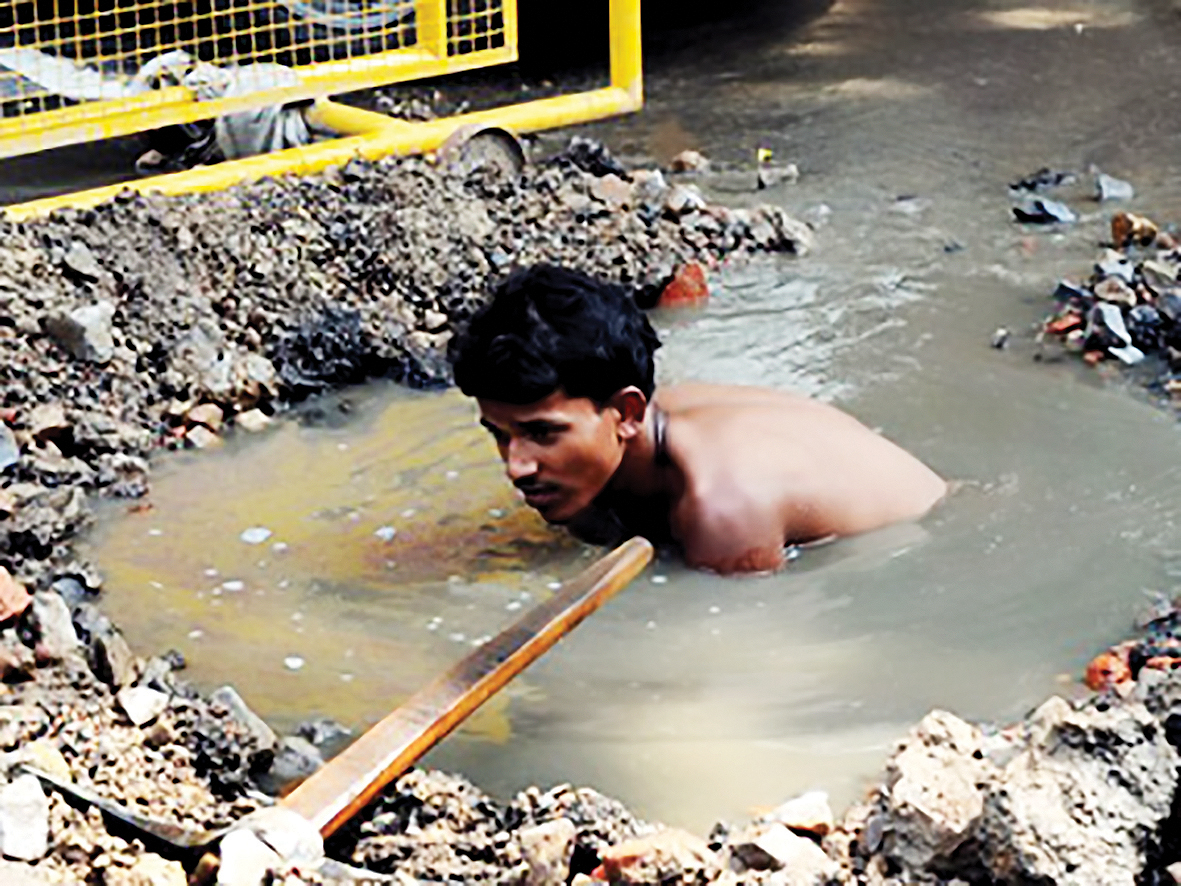Launched with much fanfare in February, sewage cleaning machines are set to bring empowerment of disadvantaged castes and eradicate manual scavenging. How is Delhi Government’s initiative working on the ground? We find out
Sewage cleaning in India is not just a question of development agenda or civic responsibility—it’s a matter of life and death. Since 2017, at least 221 people have died in sewers and septic tanks. Limited awareness about laws such as the Prohibition of Employment as Manual Scavengers and their Rehabilitation Act, 2013, compounds this problem.
In February this year, Chief Minister Arvind Kejriwal-led Delhi government flagged off a fleet of 200 sewer cleaning vehicles. This was a step towards eradication of manual scavenging, they said.
Three months later, Newslaundry takes a look at the status of the project.
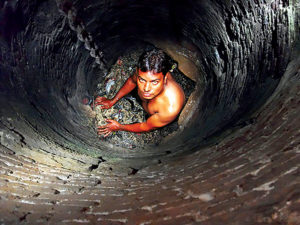
South Delhi’s Tigri is 20 minutes from the Malviya Nagar metro station, where one of the sewage cleaning machines is used. This machine covers Tigri colony, Tigri village, Tigri Extension, Sangam Vihar and Tigri DDA flats. Walking through the narrow lanes to his office, the area supervisor, Chandan Das, tells Newslaundry the lanes are only getting narrower. Here, workers work from 9 am to 5 pm. “We get about 10-15 complaints on a regular basis. We try to solve them on the same day. We get more complaints during winter, and we’re hoping we will get more vehicles by December.”
Before the new machine came along, jetting—unclogging of pipes and removal of blockages—was done by older vehicles. The new machine has features for rodding—removing sludge—and grabbing, which helps in desilting. Workers no longer have to manually move the removed waste as there is a bucket and a dustbin attached to the machine to carry out waste. Since the new vehicles are smaller, it is easier to navigate through narrow roads. They have a 1,500-litre water-holding capacity, while the older vehicles had a capacity of 4,000 litres.
Why 200 machines?
Delhi has 272 wards. While most wards will have one machine allotted to them, in some cases, a few have been clubbed together depending on the area and population, VK Grover, executive engineer, Delhi Jal Board, told Newslaundry. He added that so far 137 machines have been sanctioned while remaining 63 will start functioning by the end of June or early July. However, according to some of the workers that Newslaundry spoke to, only 77 machines are currently operational.
According to VK Grover, (DJB), the procedure slowed down due to financial bottlenecks. He said each machine costs between ₹30-32 lakh in addition to an 18% GST. This brings the total cost at ₹35-40 lakh. Each machine is owned by a contractor, who pays 10% of the machine’s cost upfront. The rest of the amount is covered in the form of a loan by the SBI, which has to be paid back in five years. “SBI is taking its time to give loans to every individual, which makes sense. After all, they are providing 90% of the total amount as loan,” Grover said.
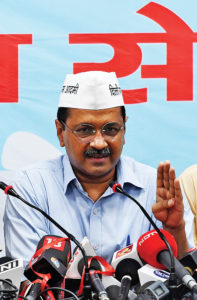
Every constituency will have three to four machines.
On behalf of the 200 contractors, Smart Green Infra & Logistics Management India Pvt Ltd is the single window contact for the Delhi Jal Board.
Manual scavenging is an unorganised sector in India. The Dalit community is targeted whenever there’s a dearth of labour, with 4-5 men being roped in for a day’s work. The daily wages are as low as ₹300. Mukesh Virat, a contractor and social activist, says, “A regular manual scavenger opens the lid of a sewage line and checks with a matchstick whether the line has inflammable or toxic gas before entering. There’s no assurance that all toxic gases can be found that way. There should be an awareness campaign that at no cost should anyone enter the sewage lines. Machines are supposed to do that work.”
***
Reskilling workers
Each vehicle is assigned a trained driver and two helpers. So far, 600 workers have been trained—three workers assigned to each of the 200 machines—at the Keshopur Sewage Treatment Plant. Since all the machines aren’t operational yet, some of the workers are working as trainees for machines that have already been launched. Kuldeep Kumar, one of the ‘trainee drivers’, says, “We have not been told when I’ll get to drive the vehicle I am allotted to, but we expect it to happen soon.”
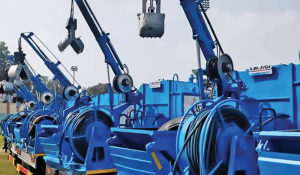
Vishal, one of the helpers in Tigri, says the newer machines have brought some relief to them. “The small size of the vehicle allows us to solve complaints from the narrowest lane. Earlier, it was challenging to enter these lanes with big machines.” He added that older machines only had jetting systems in the vehicle. “But now the vehicles can do jetting, grabbing and rodding. The machines also have a dustbin attached to it which allows you to collect waste and throw it to a distance.” Hence, three new employees arrived with each machine. While most of them told Newslaundry they’re happy with their jobs, many said they weren’t aware of the nature of the job before they joined. Rahul Kumar, one of the helpers in Tigri, says, “All we knew was that there is a vacancy in the Jal Board department. Later we realised it was related to sewage cleaning and we would be taken on a contract basis of seven years. Though we are happy about our new jobs, the fact that it is still not permanent makes us a bit uncertain about our future.”
Meanwhile, workers who’ve worked in the area before the machine’s arrival feel rather blindsided. Karan Singh, who has worked to clean sewage since 2014, says, “We have around five or six years of experience; I mean, I can open the sewage lines using my hands. This new lot asks for our help whenever required because of our experience. I have nothing personal against them. But while I am getting ₹Rs 11,000, the newly-appointed workers are getting Rs 14,000.”
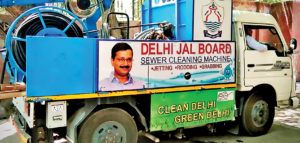
Newslaundry asked Grover why old employees weren’t assigned to the new machines. Grover, who’s also one of the brains behind the machine’s development and the project’s execution, says they couldn’t give machines to “every person who claims to be experienced”. “The first preference had to be given to the relatives of the deceased, the people who died cleaning sewage. The second preference was the section that has been safai karamcharis. Third, was the SC/ST communities, and fourth for others.” According to a brief note on the project that Grover gave Newslaundry, the allocation of machines is as follows: seven machines for kin of deceased, 50 for safai karamcharis, 136 for people from the SC/ST communities, and seven for general. Each machine has one contractor.
Meanwhile, the Jal Board department is currently battling a severe shortage of staff. While six employees handle the four areas in Tigri, in the Chirag Delhi office, 20-21 employees are assigned to Greater Kailash-I and Chirag Delhi. Chandan Yadav, a junior engineer at the Chirag Delhi office, says, “We manage by having a tender process which gets us workers for six months. Even when unemployment is at its peak, there’s a shortage of staff.”
WASTE MANAGEMENT
While the machines take care of clearing sewage waste, dumping the waste—and where to dump it—is another issue. One of the sites Newslaundry visited in Kalkaji constituency, near Govindpuri metro station, the waste was being dumped right outside houses. On asking what will happen to the waste, they assured that once it gets dried up, it will be removed either by them or MCD. Workers at various sites point out of the lack of coordination between the Jal Board and the Municipal Corporation of Delhi. According to
them, the MCD—the blanket term for the North Delhi Municipal Corporation, South Delhi Municipal Corporation and East Delhi Municipal Corporation—is reluctant to collect the waste from the Jal Board, claiming it isn’t their work.
Tejinder Nath, the driver of the machine assigned to Tigri, says, “Prakash Jarwal, the vidhayak (MLA) of our area is the husband of Jyoti Kohli, who looks after the (South Delhi) MCD. Even then, the relations are cold between both departments. If the departments worked in an organised manner, the situation would be a lot better.”
The newly-recruited workers come under a separate body under the Jal Board. The larger organisation associated with the organising and managing the Dalit community to get loans and train them to operate the vehicles is the Dalit Indian Chamber of Commerce and Industry (DICCI). DICCI president Ravi Kumar Narra explains, “The mammoth task of convincing the workers, deciding who would be given preference, organising the labour force for something that was completely alien to them which is heading towards entrepreneurship—that was our task.”
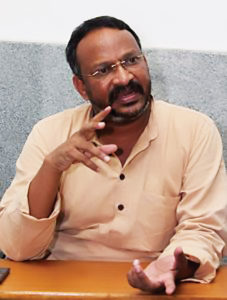
The project has been criticised by prominent activists like Bezwada Wilson, who said it reasserts the association of sewage cleaning with Dalits. But Narra says, “How else do they get out of it? While getting [school] admissions for their kids, where they once wrote ‘labourers’ in the profession column, they now fill ‘contractors’. They own a vehicle, they get profit out of it. They get social and economic upliftment. These are steps towards change.”
While Narra is convinced of this upliftment, the workers aren’t so sure. Ankush Balguher, a driver/operator of one of the machines, says: “If you notice, 65-70% of the population is from SC/ST. There is no discrimination as such but we can’t change the mentality of people. What’s important for us is that we have got a job and we do it properly. We have masks, shoes, gloves and first aid facilities for our safety. We feel like employees who deserve some rights.”
Newslaundry asked Narra how he convinced the contractors to take loans, and how they manage to pay off their EMIs. Narra claims “Everyone was ready to get out from their current position”. He says the question of EMIs hasn’t come up yet since the machines have been functioning for only about a month.
Grover also shows Newslaundry various awards the Jal Board received for the project. Beaming with pride, he says the project has also been submitted for a Magsaysay award. “The obstacles we faced for implementing this project is immense. We just wanted to ensure a project like this changes the way workers feel about themselves. Tender notices were put on newspaper. But most of the audience we were targeting were illiterate, so we contacted various groups who represent Scheduled Tribes and Scheduled Castes, for the message to reach. We had to legally fight organisations like Metro Waste which had the responsibility of collecting waste before these machines were launched. They were aggrieved as they lost their contracts. Metro said that once we get the contract, we will hire workers of reserved community … They accused us of giving almost 100% reservation and called it unethical.”
Grover says the Jal Board had to go to court on a regular basis from March till May, and their day-to-day work was hampered.
The case was heard on a daily basis by Justices S Ravindra Bhat and AK Chawla. The court gave a favourable judgment to the Jal Board, quoting Ambedkar’s observation during the inauguration of the Constitution: “…We are going to enter into a life of contradictions. In politics, we will have equality and in social and economic life we will have inequality. In politics, we will be recognising the principle of one man one vote and one vote one value. In our social and economic life, we shall, by reason of our social and economic structure, continue to deny the principle of one man one value.”
The court had raised several questions on the project’s viability, asking what would happen if the large loan amount became unbearable for the contractors, and if they began committing suicide. It emphasised that the project should not create situations similar to what happened to India’s farmers. The Jal Board assured the court that in case of extreme situations like a major accident or death, the loan will be paid by the government. If this happens, Grover says the Centre would provide them with ₹Rs 10,000 crore under the Stand Up India scheme.
***
But how happy are the first-time contractors with this new state of affairs? Interestingly, most of them are women. Several of them lost their spouses or sons to manual scavenging.
One of them is Maya Kaur. Remembering the day her son died, she says: “He left home, saying I will come home for lunch, and then the news reached me. I fainted at the sight of his body. What all should I go through in life: I lost my parents, my husband and my son. If I sit idle at home. I keep thinking about my fate. So I was more than convinced when I was given the opportunity to become a contractor. I will remain distracted at least.”
These men were the sole earning members in most of the families. Dharmeet Kaur, another contractor, says, “I lost my husband. All we received was compensation of ₹10 lakh, we can’t thrive on that throughout our lives. We need a stable income.”
SP Rai, ex-bureaucrat and social activist, helped DICCI to convince people and acted as a mediator. He explains the difficulties they had to face convincing people. “There were people in the community who made them fear about the consequences, Tumhara ghar chala jayega, tumhare paise chale jayenge (Your house will go, so will your money). People backed out fearing these kind of rumours,” he said.
Preethi, who was married at a very young age, lost her husband when she was just 22. Mr Rai took the initiative of convincing her parents to allow her to marry again. Now, after the allocation of machine, her husband harasses her, asking her to make him the nominee of the machine instead of her mother. “I was too young to understand anything, I have studied till class 5th and don’t know how the world functions. I can’t be dependent on my husband again, that is the reason I kept my mom as a nominee, I call Rai sir if he harasses me. He handles him by making him realise the consequences of his doing.” she said.
Rai belongs to the Valmiki community and feels strongly about its upliftment. On asking whether economic upliftment leads to social upliftment and change, he said: “It is very difficult for the mentality to change, now see he owns this machine (pointing out the person sitting beside him), he will send his children to a good school, they will get educated and will have a good job. That is how the situation will change. It is an entrenched ideology, it will take time to change.”
The project, despite all the hiccups, points at the commendable collaboration of the Centre and Delhi Jal Board. “This wouldn’t have been possible without the central government and the Delhi government’s cooperation. The initiative by Delhi Jal board along with the Stand Up scheme by the central government made it happen,’’ said Manjul Kumar, National Head, Banking and Finance, DICCI.
Clearly, there is much that Delhi stands to gain if the Centre and the state government set aside their differences.
www.newslaundry.com

